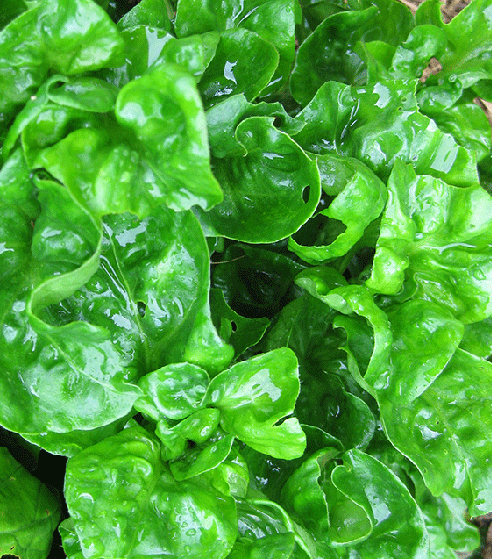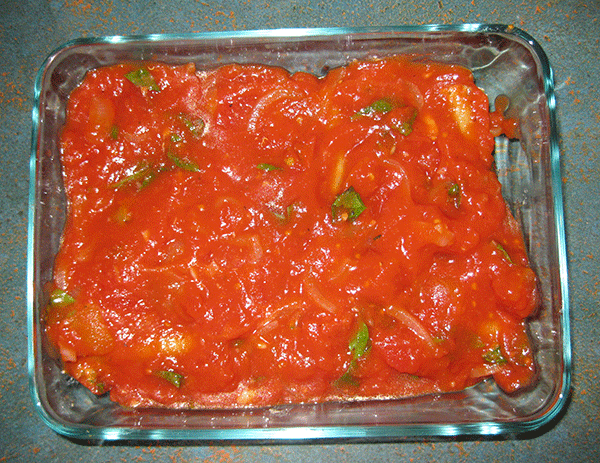Brazilian spinach – a leafy green vegetable for the subtropics
I can’t remember where my first plant of Brazilian spinach arrived from as I feel like it has always been in the garden, a truly remarkable standby. It is a subtropical replacement for the garden niche New Zealand spinach occupied when I lived much further south. Once upon a time if I needed a spinach-like leaf for spanakopita, spinach pie or risotto and there was no silverbeet or spinach to pick, I would gather the youngest, juiciest leaves of New Zealand spinach syn. Warrigal Greens. It spread wide in a mat, self-sowed, was unfazed by the hottest summer and always seemed to be available. Moving north to the subtropics I discovered it really disliked humidity and even though it self-sows, the niche it occupies is much smaller. It tends to fill the gap in winter when the silverbeet is too small to pick and the frost has browned off the subtropical green leafy vegetables.
Its place as a perennial mainstay has been taken by Brazilian spinach, which has a large number of common names but I have not determined to my satisfaction its botanic name. Its common names include Poor Man’s spinach, (not a moniker I’m fond of), Samba lettuce and Sissoo spinach. The last one, Sissoo spinach, Alternathera sissoo is possibly either a close relative or a subspecies because the growth habit and leaf shape are slightly different to the Brazilian spinach I have always grown.
Brazilian spinach is a low growing perennial leaf vegetable, which forms a neat mound to 30 cm high, rather than spreading in a mat. This growth makes it a handier plant for edging paths, especially in shady areas as it is quite shade-tolerant. The leaves are mid green, round and crinkled. The flowers are insignificant, small and white. It is suitable for subtropical and tropical areas only; it is unlikely to do well further south than Sydney.
It is a good tasting, wet-season, green leafy vegetable, without the slimy or mucilaginous texture that people often dislike with aibika or Ceylon spinach. Use it cooked rather than in salads.
Cannelloni with Brazilian Spinach and Ricotta
Tomato sauce
- Drizzle of olive oil
- 1 garlic clove, crushed
- ½ cup fresh basil leaves, shredded
- 400g tin of tomatoes or 500g fresh
- 250ml water
- Salt & pepper
Spinach and ricotta filling
- 1 tbsp. butter
- Drizzle of olive oil
- 1 garlic clove, crushed
- Harvest a large colander of fresh Brazilian spinach; wash it well and finely chop
- 500g ricotta * (see note)
- 2 tablespoons finely chopped parsley
- ¼ cup grated parmesan * (see note)
- Salt & pepper
- Freshly grated nutmeg
- 1 cup grated tasty cheese
- 2 packets instant dried cannelloni tubes
Method
Preheat oven to 190°C.
Find an ovenproof dish that the cannelloni fits neatly into, in one layer. Lightly brush the dish with olive oil.
Heat a large saucepan with a tbsp. of butter and a drizzle of olive oil. Add a finely chopped garlic clove. As soon as the garlic begins to cook add the finely chopped Brazilian spinach and keep turning it until it has all wilted and changed colour. Set it aside in a bowl to cool.
Make the tomato sauce next by placing the saucepan back on the heat, add a little more olive oil, the other finely chopped clove of garlic, the finely chopped onion and cook until soft. Then add chopped tomatoes, either fresh or tinned and water. Simmer gently for 10 minutes. Remove from heat, add the shredded basil, salt and pepper to taste. The sauce should be quite runny as instant pasta tends to suck up quite a lot of moisture.
Put the cooled down spinach, the ricotta, tasty cheese, nutmeg, parsley and salt and pepper into a food processor and mix well. Pour a third of the tomato sauce into the ovenproof dish, spreading evenly over the base.
Fill each cannelloni tube with the Spinach and Ricotta Filling. I use a teaspoon but it is possible to use a sandwich bag as a piping tool by cutting off a corner. Be careful not to leave gaps. Lay each cannelloni as it is filled over the tomato sauce in the pan.
Finish by spreading the remainder of the tomato sauce on top and sprinkle with parmesan.
Bake uncovered for about 20 to 25 minutes until cooked through. Test a bit of pasta for doneness. If it looks like drying out sprinkle on a few tablespoons of boiling water. Or if you prefer, cover with a lid or foil before baking. I just usually try to avoid using foil.
To make this gluten free, layer the filling between GF lasagne sheets. I haven’t seen GF cannelloni available. This freezes well and is far too fiddly to only make for one meal; I usually make enough for three trays and freeze two.
* Note: avoid cheeses that contain sorbate preservatives 200 – 202 as there are plenty of good brands without this additive.
Tags: recipe, vegetables, vegetarian
Posted in Kitchen, Organic Gardening








Brazilian spinach can get a bit raggedy in a Kempsey winter though it is fantastic in the height of a hot wet summer when the silverbeet has bolted. I love Warrigal greens though, and for my first few years here was so disappointed that I just could not get it to grow much. Then we started to building work and it just kept popping up everywhere, not in the garden but all over the place. Nice healthy Warrigal greens growIng all over the building site on rubbish soil. It particularly loved anywhere there was a bit of sand. An added advantage was the wallabies didn’t eat it, a great advantage around here.
A friend of mine gave me a cutting of this plant, and for months I couldn’t find any information on what it actually was, and my friend didn’t know either. Only the last few days I was looking through a book by Isabell Shipard, and she listed it as Samba or Sumba lettuce. I use a lot of it in salads, but you say to cook it. Is it high in oxalates?
I recommend cooking it because I find the leaves are a bit tough for a salad vegetable. There are better subtropical, hot humid weather choices for salad such as Egyptian spinach or Surinam spinach. If it proves to be Sissoo spinach then yes, it does have oxalates but no more than English spinach. Brazilian spinach lacks the lemony tang often associated with oxalate-rich plants such as sorrel.
There are so many “spinach” substitutes suitable for our sub-tropical climate once you start asking and looking and they often self sow or grow easily from piece: Orach, Eqyptian, Brazilian, Tahitian and Ceylon Spinach, Aibika, Warrigal Greens, Amaranth. The Surinam spinach you mention Earthwise is a new one to me – I love to find new plants 🙂
There must be others as well. Any recommendations?
Also Okinawa spinach (Guyra crepioides) and Longevity spinach (Gynura procumbens) which are both great raw.
Surinam Spinach is less common than some of the others. It is not a true perennial but grows readily from a cutting and also self-sows. I find it the most palatable of the lot in salads, 2nd choice would be Mushroom Plant. It is available as tubestock for a short time
http://greenharvest.com.au/Plants/RhubarbToStrawberries.html#SurinamSpinach
I don’t like the texture of Ceylon spinach, and that was my first question. And you answered it. I haven’t grown this one before. I have Egyptian spinach and amaranth and orach as my summer spinach substitutes, but this one sounds like a really useful plant.
Egyptian spinach is a bit too enthusiastic at self-sowing. This is not a problem if you have chooks hungry for greens but otherwise it is worth cutting them out to use in a salad at the 3rd leaf stage. Always good to turn your weeding into harvesting, I find it easiest to harvest baby greens with scissors as you don’t get soil mixed in.
And the chooks LOVE it too Linda, mine go crazy to get some.
I have had Brazilian Spinach growing for about 12 months and it has turned into a very attractive green mound in my vege garden, I am considering using it as an edging plant in some of my more ornamental gardens – I love plants that are both beautiful and edible. Will it propagate from a cutting? Thanks for the receipe – can’t wait to try it.
Yes it grows well from cuttings
Where can I procure Brazilian spinach? Seeds would be easier to transport. Cuttings or seedlings in a location in North Brisbane are also possible to collect.
Brazilian spinach doesn’t really produce seeds so it is propagated from cutting. We ship plants out by mail order http://greenharvest.com.au/Plants/SummerLeafyGreens.html#BrazilianSpinach